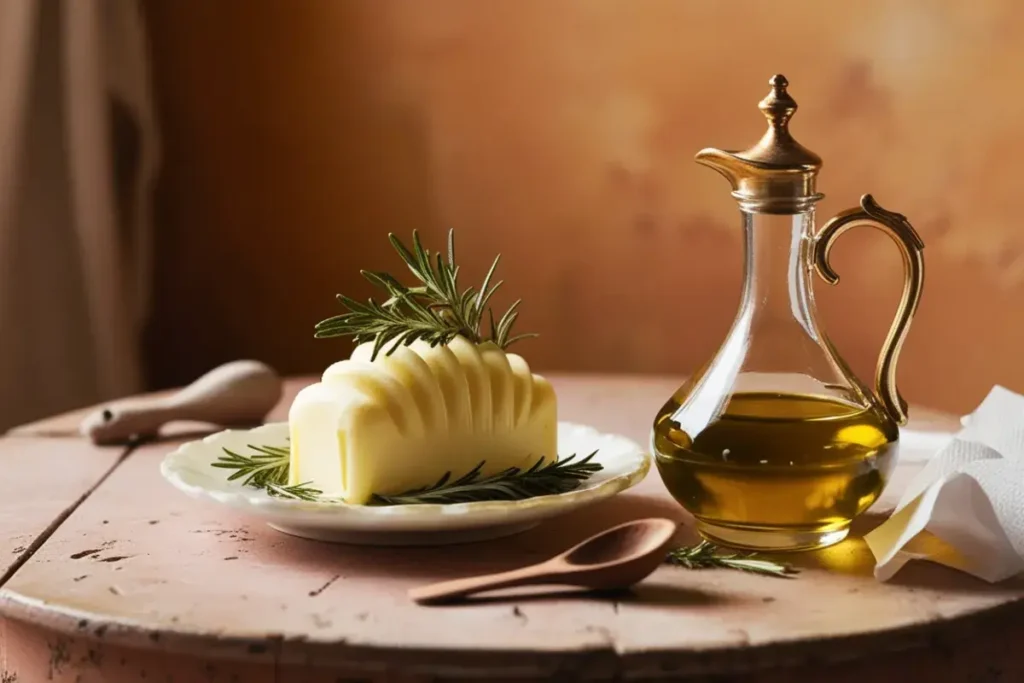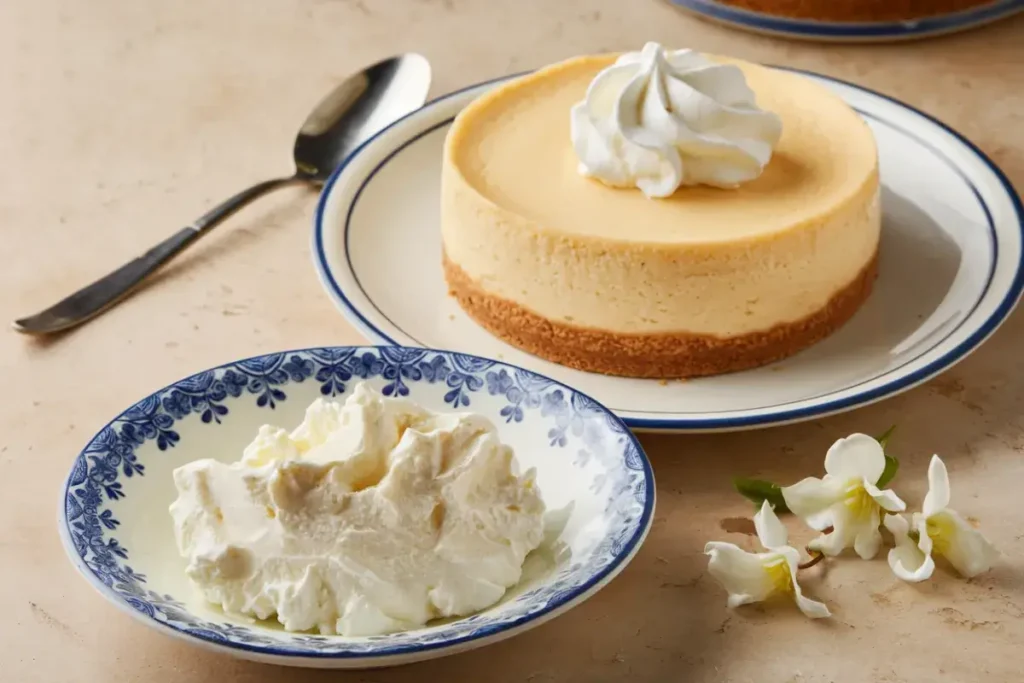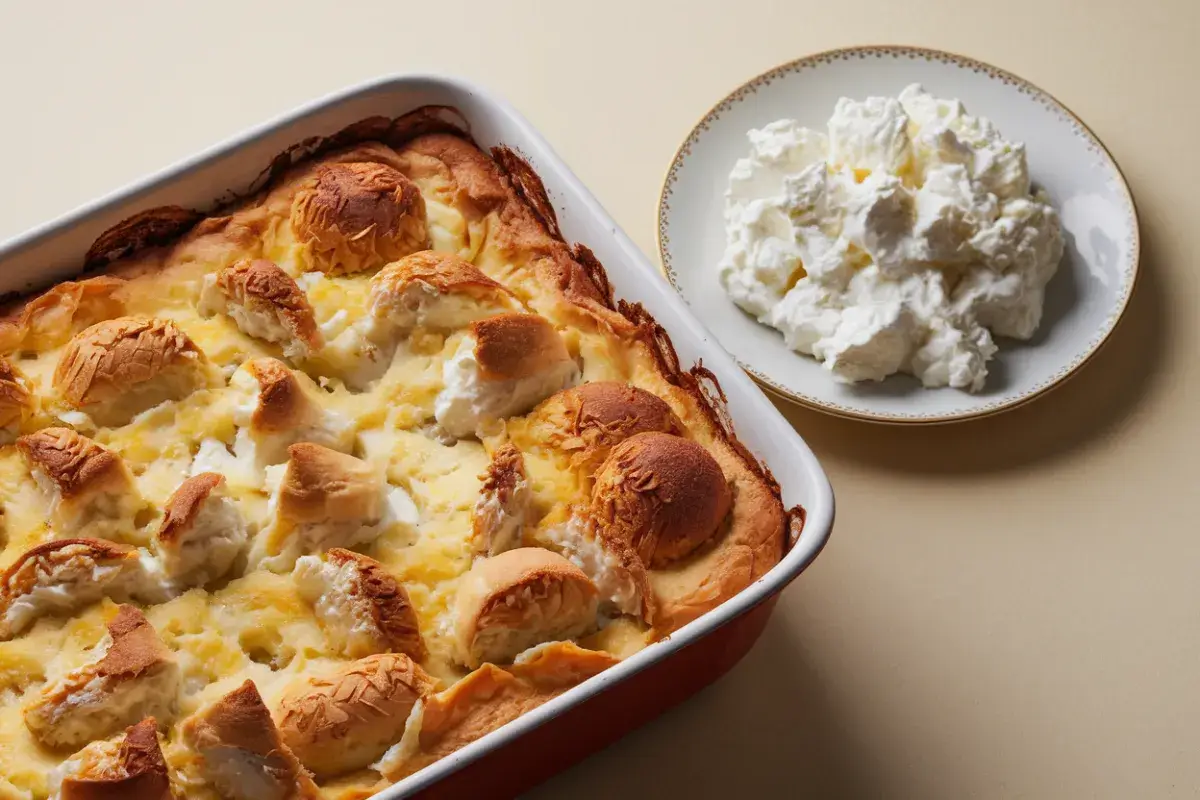Cottage cheese is often underrated in the world of baking. While it’s most commonly used in savory dishes, cottage cheese is surprisingly versatile and can replace many traditional baking ingredients. Whether you’re looking to reduce fat, add protein, or simply try something new, cottage cheese can be a game-changer in your kitchen.
In this article, we’ll explore the many ways cottage cheese can substitute for other ingredients, its nutritional benefits, and how it can elevate your baked goods. From creamy cheesecakes to moist muffins, you’ll soon see how cottage cheese can make your baking both healthier and tastier. In this guide, we’ll explore what cottage cheese can replace in baking and how to use it in your favorite recipes.
Nutritional Benefits of Cottage Cheese in Baking
One of the best reasons to use cottage cheese in your baked goods is its nutritional profile. It’s packed with protein, which helps build structure in baking, especially in recipes that require a rich, moist texture. Cottage cheese is also low in fat compared to ingredients like butter or cream cheese, making it a healthier alternative without compromising flavor.
Incorporating cottage cheese into your baking can also boost calcium intake, which is important for bone health. You get additional vitamins and minerals, including B vitamins and magnesium, that contribute to overall wellness. For more on the health advantages, you can check out the full nutritional benefits of cottage cheese.
Cottage Cheese as a Substitute for Dairy Products in Baking
Cottage cheese’s creamy texture makes it an ideal replacement for many dairy products commonly used in baking. Below are some of the most effective swaps.
Cottage Cheese as a Replacement for Cream Cheese
Cream cheese is often used in recipes like cheesecakes, frostings, and even cookies. Fortunately, cottage cheese can seamlessly take its place. While cream cheese has a thicker, smoother consistency, cottage cheese can be blended until smooth to achieve a similar result.
- Pro tip: Blend cottage cheese in a food processor to break down its curds for a smoother texture.
- Recipes: Cheesecake, creamy dips, frostings.
When used in cheesecake, cottage cheese provides a lighter texture without the extra calories from fat. It’s an excellent choice for anyone seeking a healthier version of their favorite desserts.
Replacing Ricotta Cheese with Cottage Cheese
Ricotta cheese is a staple in both sweet and savory recipes, but it can be expensive or hard to find in some places. Cottage cheese is a great alternative due to its similar texture and moisture content.
Examples of dishes that benefit from this substitution include lasagna and cannoli. Cottage cheese delivers comparable creaminess while adding more protein and less fat. Its slightly tangy flavor can even enhance certain recipes, offering a fresh twist. For a delicious bread recipe using cottage cheese, check out this cottage cheese bread recipe.
Cottage Cheese as a Fat Substitute

When it comes to replacing fat in baking, cottage cheese stands out for its ability to cut calories while keeping your baked goods moist and rich in flavor.
Replacing Butter with Cottage Cheese
Butter adds richness to baked goods, but it’s high in fat and calories. Using cottage cheese instead allows you to create healthier versions of cakes, cookies, and muffins without sacrificing flavor. Cottage cheese provides a creamy texture and moisture, making it a suitable butter alternative in many baked treats.
- Best for: Muffins, quick breads, cakes.
- Pro tip: Use a 1:1 ratio when replacing butter with cottage cheese. Blend the cottage cheese first to create a smoother mixture.
You’ll find that the texture of your baked goods may become a bit denser, but this trade-off is well worth the health benefits.
Using Cottage Cheese Instead of Sour Cream
Creamy and tangy, sour cream is often used in cakes, cupcakes, and toppings. But when you’re looking for a healthier alternative, cottage cheese is a fantastic substitute. It’s lower in fat and adds extra protein without altering the essential moisture and richness that sour cream provides.
- Best for: Cupcakes, cakes, dips.
- Pro tip: To achieve a smoother texture, blend the cottage cheese before adding it to the batter.
By using cottage cheese in place of sour cream, you get a lighter texture, perfect for desserts like light and fluffy cakes or savory items like quiches and dips.
Cottage Cheese as an Egg Substitute in Baking
Can cottage cheese replace eggs in baking? Yes, in some cases, it can. While it’s not a direct substitute for eggs in every recipe, cottage cheese can serve as a moisture-rich alternative, particularly in recipes that already include eggs but need more moisture or structure.
Cottage cheese works best in:
- Pancakes
- Muffins
- Quick breads
By blending cottage cheese with other ingredients, you can create a batter with a texture that mimics the richness of eggs. However, if your recipe relies on eggs for leavening (making the dough rise), cottage cheese may not provide enough lift. In those cases, combining it with baking soda or baking powder might be necessary.
Cottage Cheese as a Replacement for Heavy Cream
In baking, heavy cream is often used to add richness and moisture, especially in creamy desserts or fillings. Cottage cheese, when blended, can deliver a similar creaminess without the excess fat found in heavy cream. This swap works particularly well in recipes like sauces, quiches, or creamy pie fillings.
- Pro tip: Use blended cottage cheese for a smoother texture.
- Best for: Sauces, creamy desserts, quiches.
This substitution is perfect for those looking to reduce calories in dishes without giving up the creamy consistency they love.
Cottage Cheese in Gluten-Free and Low-Carb Baking
If you follow a gluten-free or low-carb diet, cottage cheese is a great addition to your baking arsenal. Since gluten-free baking can often lack structure and moisture, cottage cheese helps by providing protein and creaminess, making your baked goods more tender and less crumbly.
- Benefits:
- Adds moisture and structure to gluten-free recipes.
- High in protein, helping support the texture and consistency of gluten-free baked goods.
- Great for:
- Gluten-free muffins and cakes.
- Keto-friendly cheesecakes and pancakes.
In low-carb and keto baking, where traditional flour is replaced with alternatives like almond or coconut flour, cottage cheese helps counter the dryness that can sometimes result. This is especially useful in creating keto-friendly treats like low-carb cheesecakes or moist muffins without the added carbohydrates from traditional dairy products.
Flavor Adjustments When Using Cottage Cheese
One of the challenges of using cottage cheese in baking is balancing its slightly tangy taste. While this tanginess can enhance savory dishes, it may need some adjusting for sweeter recipes. Here are a few tips to balance flavor:
- For sweet recipes:
- Add natural sweeteners like honey, maple syrup, or stevia to mask the tanginess.
- Combine with vanilla extract or citrus zest to enhance sweetness.
- For savory recipes:
- Add extra herbs and spices to blend well with the tangy flavor.
- Use in dishes like quiches or savory breads where the tang can complement the overall taste.
Cottage cheese’s flexibility in flavor makes it suitable for both savory and sweet dishes, with just a little tweaking. Plus, its mild taste means it can easily adapt to the other flavors in your recipes.
Texture Considerations When Baking with Cottage Cheese
Texture is another important factor to consider when using cottage cheese in baking. Depending on the dish, the curds in cottage cheese might add an unexpected texture. However, blending or pureeing the cottage cheese before adding it to your batter can create a smoother consistency.
- How to blend:
- Use a blender or food processor to puree cottage cheese until it reaches a smooth, creamy consistency. This step is especially important when replacing cream cheese or butter.
- How cottage cheese affects texture:
- Adds moisture, which can make baked goods softer and more tender.
- Can create a denser texture in some cases, such as when replacing butter or cream.
For certain recipes like cheesecakes or pie fillings, a smoother texture is essential, so always blend the cottage cheese before adding it to your mix.
Common Mistakes to Avoid When Using Cottage Cheese in Baking
While cottage cheese can be a fantastic substitute in many recipes, there are a few common mistakes to avoid to ensure success:
- Using low-fat cottage cheese:
Low-fat or non-fat cottage cheese can result in a drier or less flavorful end product. Full-fat cottage cheese provides better moisture and richness. - Not blending enough:
Leaving cottage cheese as-is without blending can cause unwanted curds or lumps in your final product, especially in desserts like cheesecake or muffins. - Overbaking:
Since cottage cheese adds moisture, overbaking can dry out your dish. Keep an eye on your oven and check for doneness a few minutes earlier than the recipe suggests. Learn more about how cottage cheese behaves when baked and whether it melts here.
Popular Recipes Where Cottage Cheese Can Be Used

Now that you know how to substitute cottage cheese for various ingredients, here are some delicious recipes where cottage cheese truly shines. These are easy to try and will give you a taste of how this versatile ingredient can enhance your baking.
Cottage Cheese Pancakes
One of the simplest and most delicious ways to use cottage cheese in baking is in pancakes. The protein content makes the pancakes fluffier while keeping them light.
- Ingredients: Cottage cheese, eggs, flour (or almond flour for keto-friendly), and a pinch of baking powder.
- Tip: Blend the cottage cheese for a smoother batter.
- Why it works: The cottage cheese adds moisture and protein, making the pancakes both tender and fluffy.
Cottage Cheese Muffins
Muffins often rely on butter or oil to stay moist, but cottage cheese can replace those fats, adding moisture and reducing the overall fat content.
- Ingredients: Cottage cheese, flour (or gluten-free flour), eggs, and sweeteners of choice.
- Why it works: Cottage cheese offers a high-protein, low-fat alternative that still delivers a deliciously moist muffin.
Cottage Cheese Cheesecake
Cheesecake is a natural fit for cottage cheese. By replacing traditional cream cheese with cottage cheese, you create a lighter version of this beloved dessert without sacrificing the rich, creamy texture.
- Tip: Make sure to blend the cottage cheese well before using it to avoid any lumps.
- Why it works: The creamy consistency of cottage cheese mimics cream cheese perfectly, making it ideal for a low-fat version of cheesecake.
FAQs About Using Cottage Cheese as a Baking Substitute
Can you replace cream cheese with cottage cheese in frosting?
Yes, but for best results, blend the cottage cheese first. This will give you a smoother texture that’s closer to cream cheese. You may want to add a little extra sweetener or flavoring to mask the tanginess.
How does cottage cheese affect the taste of baked goods?
Cottage cheese has a mild, slightly tangy flavor. In most baked goods, this taste will blend in well, but in sweet recipes, it may require added sweeteners or flavorings to balance the tang.
Can I use cottage cheese to replace yogurt in baking?
Yes! Cottage cheese can replace yogurt in many recipes, offering similar moisture and protein but with a slightly thicker texture. It’s best to blend it first to mimic the smoothness of yogurt.
Will cottage cheese make my baked goods soggy?
Cottage cheese adds moisture, so be cautious about overusing it. However, when used in moderation, it won’t make your baked goods soggy. Blending it helps evenly distribute the moisture.
How do I make cottage cheese smooth enough for baking?
The key is to blend cottage cheese until it becomes creamy and smooth. Use a blender or food processor to break down the curds, giving you a texture closer to cream cheese or yogurt.
By using cottage cheese, you can replace traditional dairy products, fats, and even eggs in many baking recipes. Whether you’re looking for a healthier alternative, gluten-free options, or simply want to try something new, cottage cheese proves to be a versatile and nutritious choice. From fluffy pancakes to creamy cheesecakes, the possibilities are endless!

